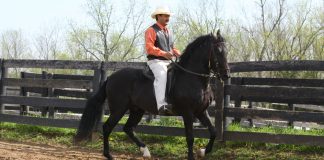It’s no exaggeration: horses are expensive. That said, you probably have plenty of horse stuff already factored into your budget, like feed and hay, boarding fees, and farrier visits. But what about those inevitable vet bills?
Here are some tips to getting a head start on those unexpected vet bills.

1. Expect the expected.
Let’s start with the easiest tip. If you can get a solid handle on your horse’s anticipated routine veterinary needs over the course of an average year, you have most of the work already done.
Based on where you live and what you do with your horse, routine vet visits are likely to include the following: biannual vaccines, an annual Coggins test, health papers for shows and/or interstate travel, joint injections for those that need it, and dental floats.
2. Savvy scheduling.
Based on tip No. 1, schedule routine vet calls to accomplish as much as possible in a single visit; this will avoid multiple farm call fees. The farm call is the standard fee your vet charges for coming to the barn (it covers professional time, similar to an office visit to your physician, as well as gas).
Better yet, share a vet visit with a friend or two and break up the farm call fee between you. Sometimes, if a friend’s horse is down the road, your vet may be willing to reduce the farm fee even if horses aren’t at the same barn. Talk with your vet to explore options.
3. Consider horse health insurance.
Equine health insurance continues to be a growing industry. A decade ago, it may not have justified the premiums in certain cases, but nowadays, this is a viable option for many horse owners to help reduce the burn of unexpected vet bills.
Most of these insurance companies, however, do increase rates for pre-existing conditions, so it makes more economic sense to enter into a plan with a young, healthy horse.
4. Get ballpark figures.
It’s no good budgeting for bills when you don’t know current prices. Be straightforward and call your vet to ask the prices of various services or, during a farm call, make the time to talk specifics.
While you’re at it, consider asking your vet for ballpark figures for some various emergency services such as a colic call and minor laceration repair.
Remember to write these prices down along with the date. As with a cup of coffee, you can count on prices increasing over time.
5. Get quotes.
Have a big farm visit coming up? Procedures such as a castration, lump removal, or other minimally invasive surgeries may require field anesthesia.
When you schedule such a procedure, get a price quote and make sure you understand exactly what is and is not included. Additionally, ask if there will be any follow-up care that will require another visit or refills on medications or other supplies.
6. Explore options.
Sometimes, money is tight. End of story. If you find yourself really worried about an upcoming vet bill, ask your vet if she offers payment plans or if there is another option you might be able to work out.
7. Don’t wait until a crisis to discover your financial constraints.
Take some time to rationally think about your financial capabilities and what your financial limits would be if an expensive equine emergency occurred.
There are typically some options when it comes to medical emergencies, such as whether to refer a horse to a specialty hospital versus at-home management, and pursuing further diagnostics versus treating conservatively, among others depending on the situation. These sorts of choices are easier to make when you know what you can reasonably spend and for how long.
8. Ask the hard questions during easy times.
Ask yourself if there are financial constraints that would require you to make a euthanasia decision as opposed to lengthening treatment or pursuing further diagnostics. These are tough decisions to consider, but thinking about them at a non-critical time gives you space to honestly assess where your financial limits lie.
When possible, talk through various horse health scenarios with a significant other or friend, as they will be able to help you think objectively while still acknowledging the love and care you give to your horse.
9. Don’t delay care in an effort to cut costs.
Sometimes the “wait and see” approach is very tempting. We all can recall a minor colic episode that turned out to just be a bit of gas or a weird misstep on the trail that only needed a day of rest. Unfortunately, there are also plenty of veterinary examples where a minor issue was never minor at all and early veterinary intervention could have shortened recovery time and decreased a bill due to less invasive or shorter treatment requirements.
Yes, being proactive in the short term may result in a vet bill that could have been avoided. But being reactive to a situation more commonly results in greater costs and sometimes longer recovery times for your horse.
This article originally appeared in the January 2018 issue of Horse Illustrated magazine. Click here to subscribe!






